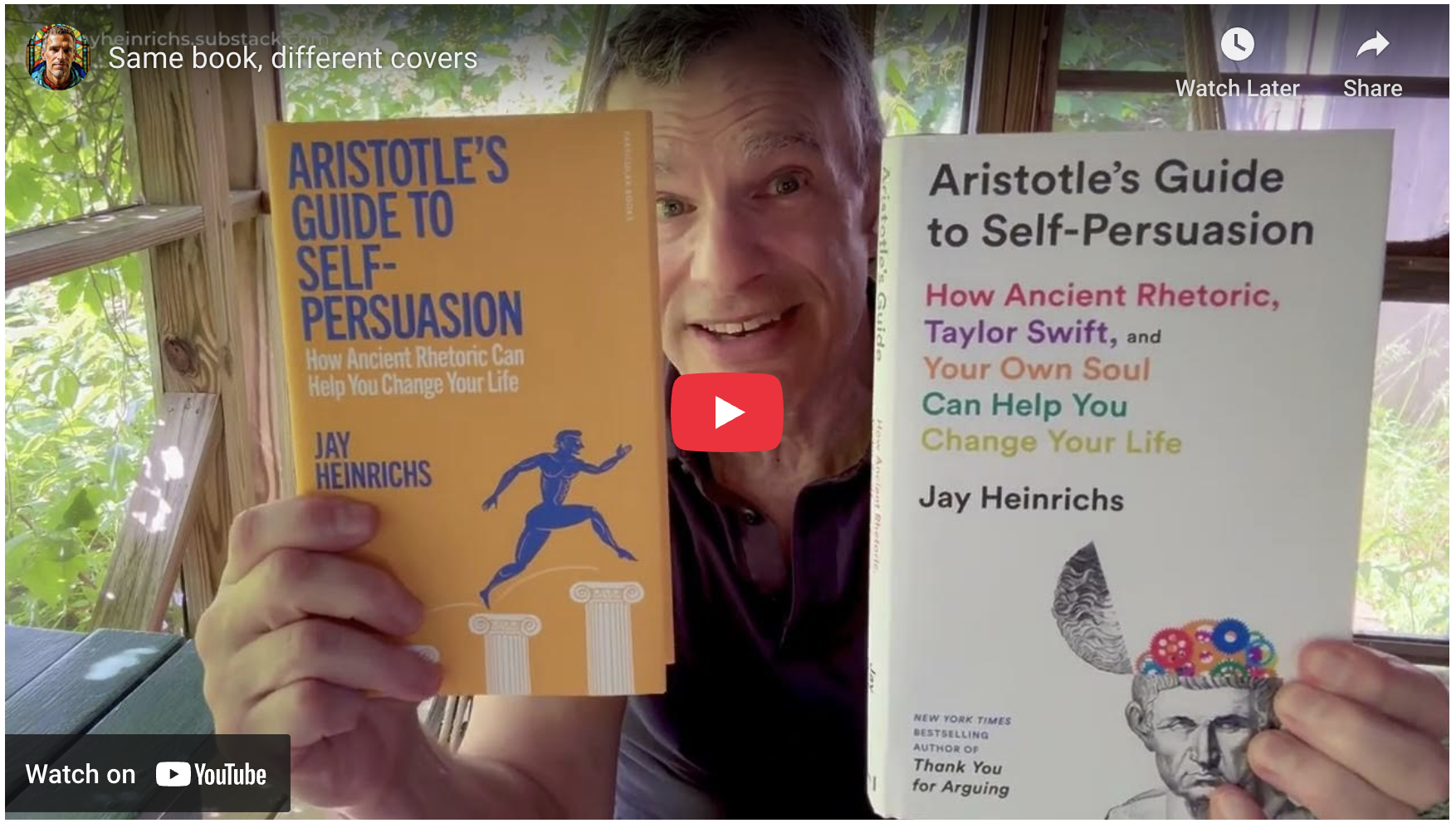Enthymeme: The Ultimate B.S. Detector
/Don’t you wish you had a lie detector? Especially these days. How can you stop from being manipulated, voting for the wrong person, buying stuff you don’t need, or falling in love with a good looking cheating liar?
Well, here’s the thing. To keep from being manipulated, you don’t really need a lie detector. Instead I can show you how to spot manipulation with a simple tool of rhetoric. It’s called the enthymeme, and it’s the greatest B.S. detector ever.
The enthymeme has two parts: the proof, and the conclusion.
The proof can be a fact, a statistic, an anecdote, or a trend. It’s the reason for the conclusion.
The conclusion is whatever the speaker wants you to believe or do.
If you see an ad, the conclusion usually is, Buy This Thing.
But a lot of ads replace the proof with a feeling. It’s more of a distraction than a real proof. Like all those car commercials that show a beautiful woman next to the car. Buy this car because… Woman!
Those ads remind me of the dogs in the movie “Up,” who would…Squirrel!
Now, here’s where the enthymeme can be your best BS detector. The enthymeme has a proof and a conclusion. To be a good, trustworthy enthymeme, the proof has to support the conclusion. A woman is not a car. This is just a distraction, not a proof.
Politicians often distract us in similar ways. Vote for me because…wall!
Trump wants you to vote for him. That’s the conclusion. So what’s the proof? A wall. Vote for him and you get a wall. So ask. is the wall a good proof of voting for Trump? Will it solve the problems that worry you the most? How much of a problem is there in the first place? Illegal immigration seems to be leveling off. It goes down when the Mexican economy is strong. And how effective are walls anyway? Does the proof lead to the conclusion?
So, next time you’re wondering whether you’re being taken for a ride, ask whether the proof leads to the conclusion. The best is not a distraction. It’s not an anecdote. It’s a fact, a statistic or a trend. That’s a good proof.
Finally, ask whether the proof actually leads to the conclusion.
Suppose your fraternity has been placed on double secret probation. That’s a fact. The conclusion offered by your fraternity brothers: Toga!
Ask yourself whether the fact—double secret probation—leads to the conclusion—toga party.
Definitely. A toga party is definitely the proper solution to double secret probation.
Does the proof hold up as a fact, a statistic or trend? Is the fact from a good source? Does that proof lead to the conclusion? If the answer is no to any of these questions, then make that stupid sneeze that lets the speaker know you’ve caught him in the act.



